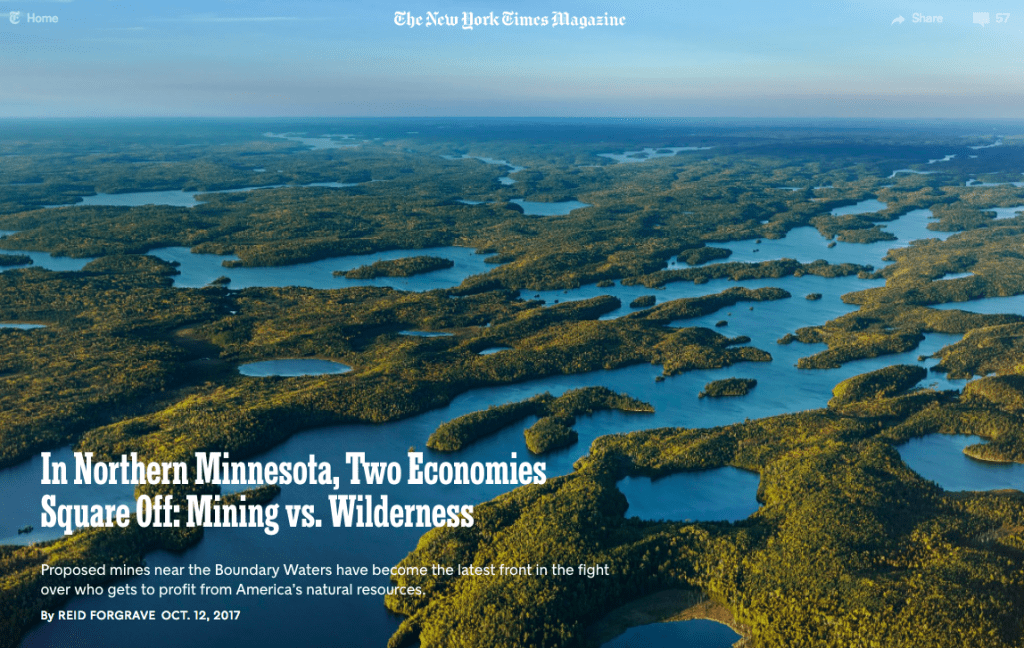
Written by Minneapolis freelance writer Reid Forgrave, it focuses on two people on opposing sides of the conflict: miner Dan Forsman and wilderness advocate Becky Rom.
The article shows a deeply personal battle over the Boundary Waters and extractive resources which has lasted generations:
Geological coincidence makes Ely — one three-square-mile town in the northernmost reaches of the continental United States — a focus of a national debate about the proper use of public lands. The place also distills the political fault lines in today’s America, pitting an angry working class against progressive activists. Just southeast of Ely, an international mining conglomerate has invested hundreds of millions of dollars during the past decade toward potential copper-nickel mines a few miles outside the Boundary Waters. The company — Twin Metals Minnesota, a subsidiary of the Chilean mining giant Antofagasta — has drilled 1.6 million feet of core samples out of 496 holes to explore the deposit from which it soon hopes to process 20,000 tons of mineralized ore a day. The company believes the area’s valuable metals — copper, nickel, platinum, palladium, gold and silver — can be extracted in an environmentally responsible way and can provide hundreds of jobs to the job-starved economy of Minnesota’s Arrowhead Region, along the northwestern coast of Lake Superior.
The article also describes the conflict as a “microcosm” of the political divisions in the United States represented by last fall’s election of President Donald Trump. Forgrave shows the pro-mining side dominated by blue-collar workers who would have been safe Democratic voters a generation ago, but who swung the Eighth Congressional District for a sixteen-point win by Trump in November 2016. Meanwhile, the wilderness proponents featured are mostly comprised of more educated and prosperous progressive activists.
Notably, there was no mention of the Trump administration’s and Congress’s current involvement in processes and legislation to either protect the wilderness watershed from mining, or remove protections and accelerate mine development.

